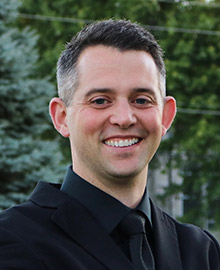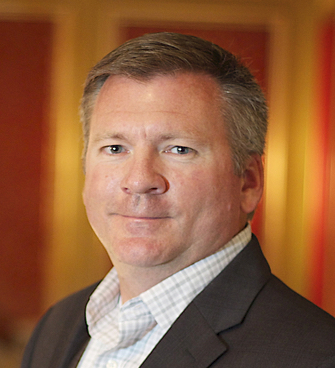College Band Directors National Association Southwestern Division Conference
Welcome from our administration
Program
| Selection | Guest Conductor/Artist | Composer |
|---|---|---|
| Fanfare for Democracy (2021) | Dr. Brad Snow, Conductor | James Stephenson (b. 1969) |
| Raise the Roof (2007) |
Dr. Todd Meehan, Guest Artist |
Michael Daugherty (b. 1954) |
| Crackle (2020) | Augusta Read Thomas (b. 1964) | |
| Symphonic Metamorphosis (1943/1972) | Paul Hindemith (1895-1963) |



Program notes
Fanfare for Democracy
"It is with pride and gratitude that I can announce that my Fanfare for Democracy will be premiered on January 20, 2021, at the United States Capitol, for the Inauguration of President Joe Biden and Vice-President Kamala Harris. The fanfare will be performed by “The President’s Own” United States Marine Band, and will be conducted by Col. Jason K. Fettig.
I am honored and humbled to be a part of such a historic event.
I was inspired to write on November 7, 2020, when reflecting on the democratic process. Like so many in this country, when the announcement of the election occurred this past Saturday, there was an overwhelming sense of relief that there was finally some closure.
Given the abnormally beautiful weather (70 degrees in Chicago in November!), my wife
Sally and I decided to take the dog on a long walk. Everyone was out, and there was
such energy in the air. During the walk, I just couldn't get the music out of my head.
I knew I had to write something celebratory. We called some friends, and met for lunch
and beers, and that's when I posted about potentially writing a fanfare. I was totally
surprised by the support the idea received, and that's when I knew I HAD to write
this piece. That afternoon - and a couple of beers in - I immediately went to work.
We had plans that evening, but by Sunday morning,
Fanfare for Democracy was completed."
Program notes written by James Stephenson.
Raise the Roof
"Raise the Roof (2007) for Timpani and Symphonic Band was commissioned by the University of Michigan Symphony Band, Michael Haithcock, music director. The first performance was given by the University of Michigan Symphony Band under the direction of Michael Haithcock, at the 2007 College Band Directors National Association Convention at the University of Michigan, Hill Auditorium, Ann Arbor, Michigan on March 30, 2007.
Raise the Roof brings the timpani into the foreground and gives the timpanist the
rare opportunity to play long expressive melodies, and a tour de force cadenza. I
incorporate a wide variety of timpani performance techniques: extensive use of foot
pedals for melodic tuning of the drums, placement of a cymbal upside down on the head
of the lowest drum to play glissandi rolls, and striking the drums with regular mallets,
wire brushes, maraca sticks, and even
bare hands.
Raise the Roof is in the form of a double variation, also known as alternating variations. The first theme of the double variation, played initially by the tuba, is presented in various timbral and rhythmic guises such as a “guaguanco”. The second theme of the double variation, first heard in the flutes and then the timpani, is reminiscent of a medieval plain chant. The chant is repeated and passed around in canons and fugues and other permutations throughout the ensemble, to create elaborate patterns as in a gothic cathedral. Raise the Roof rises toward a crescendo of polyrhythms and dynamic contrasts, allowing the timpani and the symphonic band to create a grand acoustic construction."
Program notes written by Michael Daugherty.
Crackle
"I care about craft, clarity, and passion. My works are organic and, at every level, concerned with transformations and connections. The carefully sculpted musical materials of CRACKLE are agile and energized, and their flexibility allows a way to braid harmonic, rhythmic, and contrapuntal elements that are constantly transformed — at times whimsical and light, at times jazzy, at times layered and reverberating. Across CRACKLE’s 11-minute duration, a labyrinth of musical interrelationships and connections unfold that showcase the musicians in a virtuosic display of rhythmic agility, counterpoint, skill, energy, dynamic range, clarity, and majesty. Throughout the kaleidoscopic journey, the work passes through many lively and colorful episodes and, via an extended, gradual crescendo, reaches a full-throttle, sparkling intensity — imagine a coiled spring releasing its energy to continuously propel the musical discourse. Vivid, resonant, brassy, and blazing, CRACKLE culminates in music of enthusiastic, intrepid (almost Stravinsky-like, or Stravinsky-crossed-with-Bebop-like) spirits while never losing its sense of dance, caprice, and effervescence.
CRACKLE was co-commissioned by a consortium of wind ensembles through the College Band Directors National Association. Special thanks to Dr. Douglas Stotter who was instrumental in organizing the whole project.
The co-commissioners include:
- University of Texas
- University of Texas at Arlington
- University of Michigan
- Eastman School of Music
- Meadows School of the Arts at Southern Methodist University
- Cincinnati College Conservatory of Music
- University of Kansas
- University of Illinois
- University of North Carolina Greensboro
- Missouri State University
- University of Louisville
CRACKLE is an expansion and a transcription made by the composer of her composition BRIO for orchestra and is dedicated with admiration and gratitude to John Bierbusse on the occasion of his 65th birthday."
Program notes written by Augusta Read Thomas.
View a composition map of BRIO
Symphonic Metamorphosis
"Hindemith’s Symphonic Metamorphosis on Themes of Carl Maria von Weber began life in early 1940, when Hindemith first took up residence in the United States after several years of public and private jousting with the Nazi government of his native Germany. (The Nazis officially called his music “degenerate,” though they may also have been responding to his private, but hardly secret, expressions of detestation regarding their policies.) Hindemith sketched a series of movements based on themes by Weber, to be used in a ballet for a dance company run by Léonide Massine, who had already collaborated with Hindemith on the ballet Nobilissima visione. The project died when Hindemith and Massine had one too many artistic differences (not to put too fine a point on it, Massine’s staging ideas, which would have used backdrops by Salvador Dalí, were too weird for Hindemith, and Massine thought Hindemith’s score “too personal,” whatever that means), and in 1943 Hindemith redid the music into the Metamorphosis, in the process turning it into a splashy, colorful orchestral piece of the sort that American audiences in particular seemed to like. It was an immediate success when it was premiered by Artur Rodzinski and the New York Philharmonic in January 1944. It has remained perhaps Hindemith’s most popular work, even if critics often feel compelled to denigrate it.
Weber (1786-1826), an important figure in the development of German opera and a seminal influence on Romanticism, retained an importance among later composers that we would scarcely guess from the limited exposure that he gets in modern concert halls. The themes Hindemith used are from some of Weber’s most obscure works, and came to Hindemith’s attention because they could all be found in one volume of piano duets that he owned. Hindemith not only retained all but one of the themes almost exactly as Weber wrote them, but also preserved much of the formal structure of the pieces as well, so that it is possible to follow the general outlines of Hindemith’s score while listening to Weber’s music, or vice versa, and have a pretty good idea of what’s going on. Hindemith alters nearly everything else, making radical changes to the harmony and adding to the music both vertically (with different harmonies and new countermelodies) and horizontally (extending phrases or entire sections). The surprising thing is that Hindemith’s end product, while staying so close to Weber, sounds so little like the original. For example, in the first movement, based on the fourth of eight piano duets, Op. 60, there are few hints of the 19th century aside from the middle-section theme given to the oboe. (This is followed by one of Hindemith’s niftier touches: when the principal theme returns in the violas and clarinets, he has the flute play in parallel an octave and a fifth higher, and the piccolo in parallel two octaves and a third higher. They act much like mixture stops on an organ, and make the orchestra sound more than a little like a calliope.) The second movement is based on Weber’s incidental music to Schiller’s adaptation of Turandot, the same Carlo Gozzi fantasy about China that Puccini used for his 1926 opera. Weber took his melody from Jean-Jacques Rousseau’s 1767 Dictionaire de Musique. Rousseau had gotten it from a sinologist but, as perceptive a musicologist as he was a philosopher, cautioned that it had likely been adapted to Western ears in the transmission and its authenticity was therefore suspect. It was nonetheless as close as Weber was going to get to a real Chinese melody, and he used it almost exclusively in five of the six numbers he wrote for the play. It is the only tune that Hindemith alters significantly, but his insistent repetition of the tune is modeled on Weber’s Turandot overture. Hindemith repeats it eight times in different settings, building to a splashy climax. The brass then take a syncopated variant of the theme and turn it into a fugue. The third movement retains most of the substance, and the ABA structure, of Weber’s Andantino con moto from Six Pièces for two pianos, Op. 10, No. 2. The dancing flute solo in the last third of the piece is solely Hindemith’s. The march finale is again from the Op. 60 duets, much expanded. The horn calls implicit in Weber’s trio section are made explicit in Hindemith’s version, and become the basis of the requisite big finish."
Program notes written by Howard Posner, courtesy of the LA Philharmonic
Wind Ensemble Personnel
Music Department Applied Wind / Percussion Faculty
- Dr. Jill Heyboer, Flute
- Dr. Alison Robuck, Oboe
- Dr. Allison Storochuk, Clarinet
- Dr. James Keel Williams, Bassoon
- Randy Hamm, Saxophone
- Dr. Lisa Casey, Horn
- Dr. Grant Peters, Trumpet
- Dr. Jason Hausback, Trombone
- Dr. Max Gerhart, Euphonium / Tuba
- Dr. Scott Cameron, Percussion
MSU Pride Band Staff
- Amy Perkins, Band Event Coordinator
- John Sullivan, Color Guard Director
- Maxine Sullivan, Band Support Specialist
Pride Band Graduate Assistants
- Jeremy Loui, M.M. Conducting
- Andrew Reader, M.M. Conducting
- Caleb Taylor, M.M. Conducting
- Elisa Wren, M.M. Conducting
